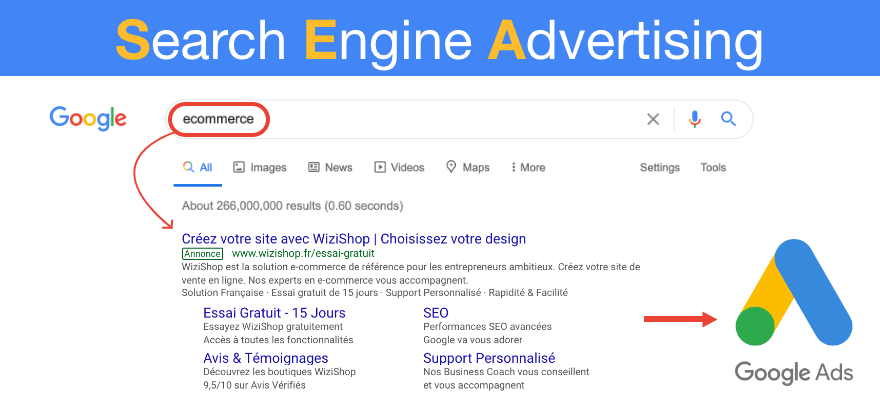
So, you have decided to launch your own digital advertising strategy. What's next? The article will take you through every step, from choosing your channel to research your audience. This article will help you create a customer journey, and how to split test your strategy. This will allow you to see if your new strategy works for your brand. If your strategy is not working, you are not the only one. Many businesses have been asking the same question. "How can I create a digital strategy for marketing?"
Researching your audience
When creating a digital strategy for marketing, it is important to understand your audience. You can accomplish this by conducting quantitative research. This involves taking a survey of a large group and generating statistical findings. If you are looking to create an email campaign that targets a particular audience, for example, you will need to identify their pain points and interests. You can also review their purchase history to determine if they have changed their purchasing habits. This allows you to target your marketing messages to specific audiences.
To create a successful digital marketing strategy, you need to understand your audience well. Without research, you'll be blind to their desires and needs. Luckily, research can help you identify those issues and develop personalized content for them. You can also predict their needs, which will help you become more efficient in your marketing. Here are some tips on researching your audience.
Interviews: You can use surveys to better understand your audience. Interviews can be conducted with customers, published customer reviews on social media and sent to existing customers. These surveys will provide valuable insights into the personality of your audience. Then, you can create your digital marketing strategy accordingly. It is important to research the audience. However, it is also crucial to create a compelling digital marketing campaign. This way, you'll be able to engage your audience and increase sales.
Segmentation: By understanding your audience's preferences, interests, and lifestyle, you'll be able to tailor your messaging to them. Segmentation is a powerful tool to create stronger messages and connect with customers in a more personal manner. Adidas sent a specific email targeting women, while the clothing manufacturer categorised its customers by gender. The vast majority of customers buy jeans and a survey asking them to rate the retailer would yield an average score of 8/10.
Choose the right channels
Your product or service promotion will be enhanced by digital marketing channels. Your choice should depend on your primary objectives, target audience, competition and budget. Different channels have different results, so choose wisely and decide what works best for you. You will need to choose which channels you use to determine the types of content you want and how your ads are formatted. Content marketing is still the best form of marketing. It will always be relevant. However, if your goal is to reach your audience, this technology must be used.

The business goals will affect the choice of digital marketing channels. Your long-term and short term goals should be determined. A long-term goal could be to increase revenue by 20% over the next two years, while a short-term goal might be to generate 400 sales qualified leads within six months or increase website traffic by 70% in eight months. Make sure to identify the short-term and long-term goals of your business so that you can determine which channels will work best for you.
Be sure to evaluate the effectiveness of each channel before making a decision on which channels you will use. Each channel comes with its own strengths, weaknesses and freedoms. Identify the type of creative content you will need for each channel, as well as its costs. Before you decide to start using new channels in your digital advertising strategy, ensure that you have exhausted all your budget. If you want to create a buzz-generating campaign, you should use Facebook or Twitter.
Creating a customer journey
Customer journey maps are an important part of a digital marketing strategy. These maps outline the customer's journey from decision to action. The customer journey map serves many purposes. For example, it can show the customer's journey from the initial stage of the sales funnel up to the moment when they become lifelong customers. The customer journey map can also help identify where improvements can be made.
In simple terms, a customer's journey map shows how a prospect will get to the point of purchase. It is used by marketers to help them map the questions they ask as well as the pain points they encounter. The higher-funnel stages aim to create awareness and interest while the final stages focus on fostering brand loyalty. The first step in this process is to create awareness. This can be achieved through word of mouth, social media, search engine suggestions and blogs.
After researching and learning about a brand, potential customers begin the information-gathering phase of the customer journey. Although they may not know you personally, they will know what they are looking for. The brand should provide content to help customers make informed decisions during this phase of their Customer Journey. Additionally, customers can get a free trial period from brands to overcome any last hurdles during their buying journey.
A customer journey map will help marketers target their advertising efforts by understanding the steps customers take to buy a product or service. Each stage in the customer journey needs to have its own buyer persona. Marketers can adapt their marketing campaigns to meet the goals of each stage by clearly identifying them. A customer journey map is a tool that marketers can use to better understand their target audience. It identifies what motivates each customer's decisionmaking stage.
Split testing your strategy
Split testing in various areas of your digital strategy can make your business more profitable. Some of these areas include headlines, page copy, button text, images, social sharing buttons, email marketing, and call to actions. Here are some examples of scenarios you can test. Split testing is useful for determining which marketing tactics will increase sales and profitability. Be sure to choose the correct size sample. Split testing should occur regularly.
Split testing is a great way to determine whether certain marketing strategies work or not and to identify where you can make adjustments to increase their effectiveness. It also helps you track whether your online marketing strategy is generating leads and bringing in returns. Split testing lets you test out different versions of a website or specific elements. Split testing can help you determine whether your website is profitable. Once you have identified which variations generate more leads you can make changes in your digital advertising strategy.

ClickFunnels lets you test 6 different versions a single advertisement to get ideas for split-testing. Another good place to get ideas for split tests is on Facebook. There are many examples of ads using Facebook and you can copy them to see which ones are performing better. Split testing can be done on landing pages as well. Split-testing is possible in landing pages. One example: Moving your CTA to the bottom of the page increased conversions by 304%. However, removing it from the landingpage caused cart abandonment rates drop by 33%.
Split testing is an integral part of conversion optimization. It involves dividing traffic into two groups - the control group and the variant. Split testing lets you show half the variant version to 50% of your traffic. Splitting traffic into equal segments is used to show the variant version to each segment in a multivariate experiment. Split testing can be a powerful tool in digital marketing. The results will amaze you!
Measuring success
Measurement is an important step in any digital marketing strategy. You have many options to measure the effectiveness of your digital marketing strategy, such as determining how many visitors convert into buyers. To measure the effectiveness and efficiency of a campaign's efforts, you can use other metrics such as the number pages viewed. These metrics can also be used to assess the effectiveness and success of marketing initiatives, as they are based on the target audience.
To evaluate the success your digital marketing campaigns, you must track key performance indicator (KPIs) to gauge its success. KPIs can be quantifiable metrics that measure how your marketing team does against a particular goal. These targets may be high-level, or low-level. These KPIs are helpful in identifying campaign success.
It is also important to establish goals that will help you measure your digital marketing strategy. To illustrate, how many people did your website attract? Was your website encouraging purchase? Are your email marketing campaigns generating more business? Are you getting new business? How many people read your email and purchased? These are just two examples of what you must track to ensure your digital marketing strategy succeeds. It all depends on what your objectives are, your goals, and the digital marketing strategy you use.
FAQ
How often should my website be updated?
There are many ways to update your website. One way to make your website more modern is using a CMS, also known as a Content Management System. You can edit any content on your website without touching any code.
Another way to update your website is to use plugins. These plugins can be purchased through WordPress stores, or you can install them yourself.
WPtouch plugins and Yoast plugins are available for free. It's a good idea test out different methods to see which works best.
What are some of the best tools to do on-page search engine optimization?
Video embeds, image alt tag, structured data martup, internal link structure, and video embeds are the best tools for on page SEO. Learn more about these topics in this article.
What does SEO mean for small businesses?
Small businesses face the greatest challenge today: competing with larger companies that spend millions of dollars on advertising. Search Engine Optimization (SEO), enables smaller businesses to reap the benefits of this same marketing power without spending a fortune.
Statistics
- 93%of online experiences today begin on search engines. (marketinginsidergroup.com)
- : You might have read about the time that I used The Content Relaunch to boost my organic traffic by 260.7%: (backlinko.com)
- Which led to a 70.43% boost in search engine traffic compared to the old version of the post: (backlinko.com)
- Deleting those 10k pages is one of the main reasons that he improved his site's organic traffic by nearly 90%: (backlinko.com)
- 64% of marketers actively create SEO campaigns because they help hit multiple key performance indicators (KPIs), including increasing traffic, helping your site rank for relevant keywords, improving your conversion rate, and much more. (semrush.com)
External Links
How To
What you should know about duplicate content, SEO and other topics
Search engines and webmasters both face the problem of duplicate content. There are two types. External and internal duplicates. Sites that contain identical content on multiple pages can be called internal duplicates. External duplicates occur when a page contains identical information to another URL.
Internal duplication occurs when more than one page contains the same text or images. This is due to poor copywriting skills. Poor copywriting is when you don't have unique content on each page. This can lead to internal duplicates.
External duplication is when one page has similar information to multiple URLs. You can create external duplication if you have a product category page that lists all your products and one page that lists all your other products.
Google doesn’t penalize websites who have duplicate content. Google does penalize websites that try to manipulate its algorithm to rank higher. You should not have duplicate content on your site.
Link building is the easiest way to modify Google's algorithm. Link building is the process of creating links between your website, and other websites. These links are unnatural and may lead to Google devaluing your website.
Some ways to avoid link manipulation include:
-
Avoid low-quality backlinks that are spammy.
-
Use anchor text that is relevant to your website.
-
Create unique content to each page of the website.
-
Maintaining high quality content
-
Good domain names are important.
Don't be too concerned about duplicate content. Focus on creating unique content on every page of your website. This will allow you to rank higher in search engine results pages.